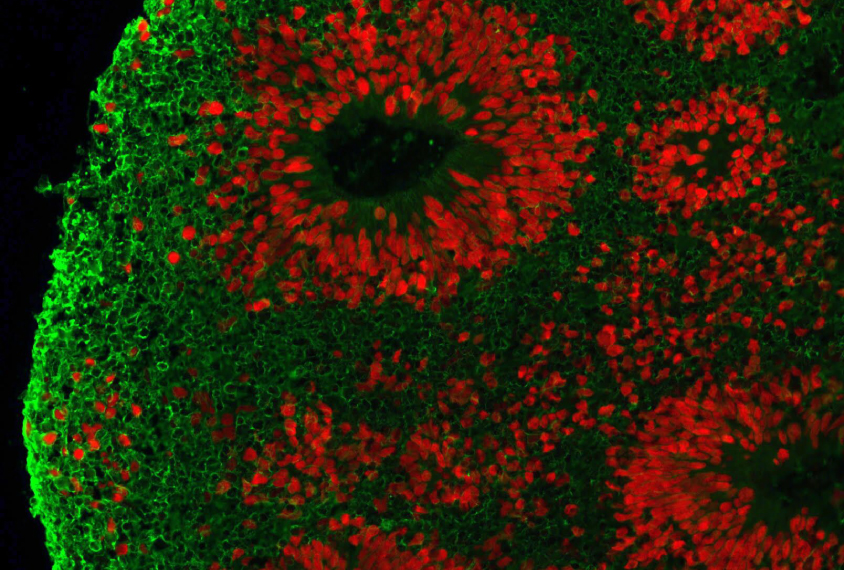
Brain ‘organoids’ point to new drug target for fragile X syndrome
New findings hint at why drugs that work in mouse models of fragile X syndrome have not been effective in people.
Many drugs that work in mouse models of fragile X syndrome have not proven effective in people. New findings hint at why: The protein missing in the syndrome controls different cellular processes in mice than in people.
“Clinical trials solely based on animal-model studies have failed,” says Yujing Li, staff scientist in the lab of co-lead investigator Peng Jin at Emory University in Atlanta, Georgia. The findings underscore “the limitations of animal models in mimicking fragile X syndrome in humans,” Li says. He presented the work yesterday at the 2019 American Society of Human Genetics meeting in Houston, Texas.
The findings also pinpoint a potential new drug target for the condition.
The fragile X protein, called FMRP, typically keeps levels of certain proteins in check. In the absence of FMRP, these proteins pile up, impairing the function of neurons.
However, FMRP loss arises differently in mice and people: Mouse models of the syndrome lack the gene that encodes FMRP, whereas people with the syndrome carry mutations that diminish its levels.
So Li and his colleagues turned to a different model: human brain ‘organoids’ — tiny spheres of brain cells made from reprogrammed skin or blood cells. Brain organoids are known to mimic several aspects of human brain development.
Species differences:
The team made organoids using blood cells from three boys with fragile X syndrome and three controls. They found that the fragile X organoids have fewer neurons that send inhibitory brain signals than control organoids do. Neurons in fragile X organoids are hyperexcitable, arrange into layers unusually quickly and show aberrant migration patterns.
The researchers then looked at the RNA molecules that FMRP binds to in the control organoids versus those in brain tissue from mouse embryos. They found that people and mice share 1,651 RNAs, but there are also significant differences: 2,075 human-specific RNAs and 803 mouse-specific RNAs.
The mouse-specific RNAs are involved in signaling pathways controlled by ‘metabotropic glutamate receptors,’ a class of proteins involved in excitatory signaling. Drugs that block these proteins have worked in mouse models of fragile X syndrome but have consistently failed in clinical trials.
One of the human-specific RNAs comes from a top autism gene called CHD2. And the fragile X organoids produce an excess of CHD2 protein, suggesting that normalizing the protein’s levels or blocking its function with a drug may represent treatment options. By contrast, fragile X mice produce typical levels of this protein.
For more reports from the 2019 American Society of Human Genetics annual meeting, please click here.
Recommended reading

PTEN problems underscore autism connection to excess brain fluid

Autism traits, mental health conditions interact in sex-dependent ways in early development

New tool may help untangle downstream effects of autism-linked genes
Explore more from The Transmitter

Newly awarded NIH grants for neuroscience lag 77 percent behind previous nine-year average

